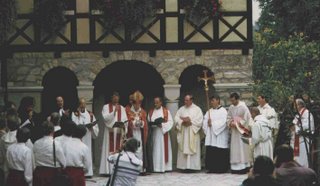Since 1727, when nine Ursuline sisters arrived from France to minister in New Orleans, women religious have played a vital role in shaping American life. Through work in education—including the parochial school system, academies, colleges, and universities—establishment of hospitals and work in health care, and social service, over 220,000 sisters have joined in unique forms of community life dedicated to prayer and service.
To recognize these women, the Leadership Conference of Women Religious (LCWR), in conjunction with its 50th anniversary, is organizing an exhibit called “Pioneers, Poets, and Prophets: Catholic Sisters in America.” The LCWR represents 400 congregations of Catholic sisters in the United States.
According to the LCWR, the contributions of religious sisters in the history of the U.S. “are unfamiliar to the general public, even to people whose lives have been touched directly by their service. . . . Catholic sisters have often been unrecognized for their remarkable accomplishments.” The exhibit will seek to “educate and celebrate” the influence of women religious. “Fewer and fewer persons have direct experiences with religious,” said Sister Carole Shinnick, a School Sister of Notre Dame and executive director of the LCWR. She also said the exhibit will highlight “vocation as a call, not just a career.”
Visit the Leadership Conference of Women Religious at www.lcwr.org.





